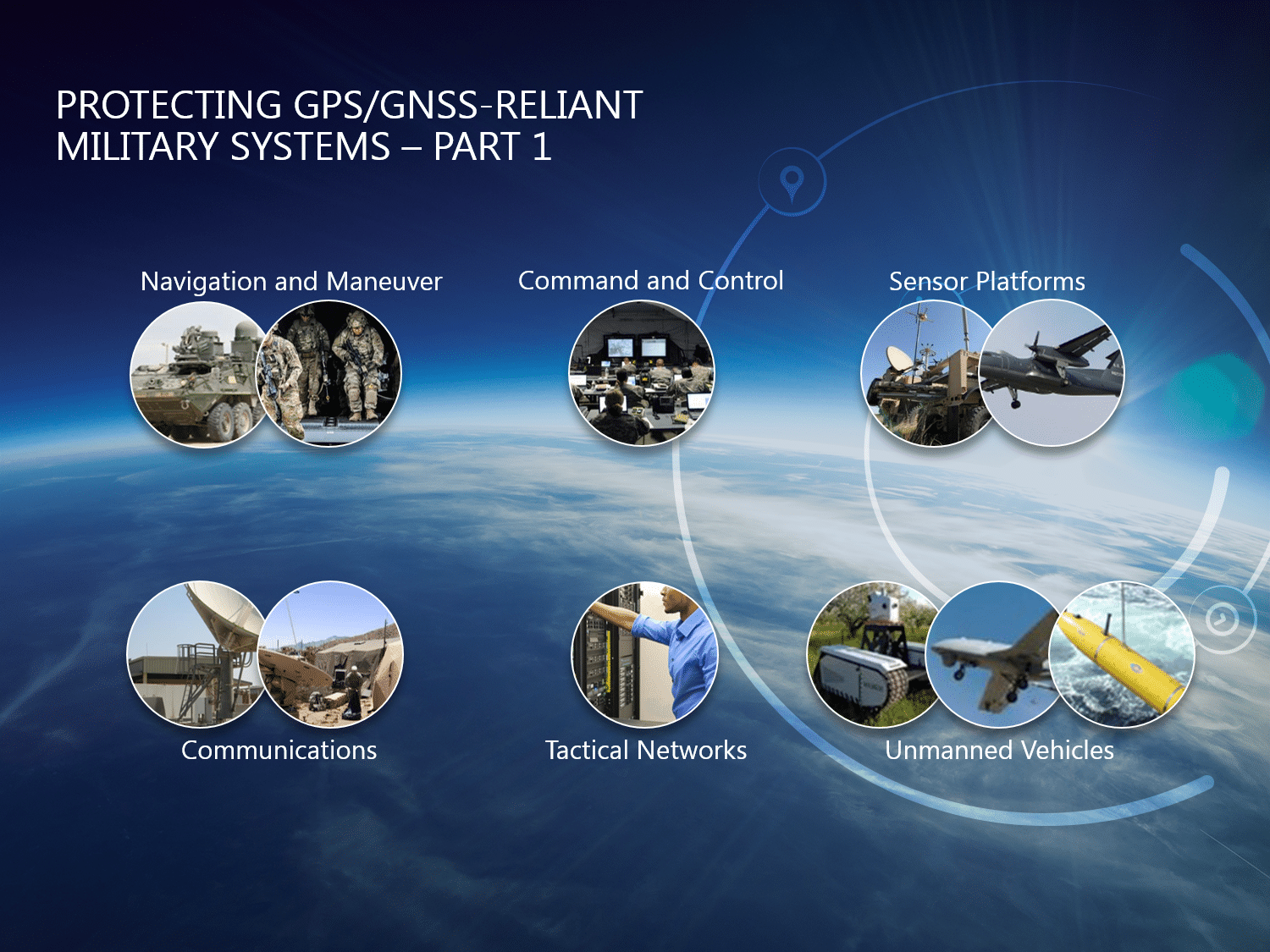
Protecting GPS-Reliant Military Systems – Part 1
While the use of GNSS – more commonly known as GPS – is now widespread, the signal itself comes from satellites that are 20,000 kilometers away, making it fairly weak and subject to loss of signal or interference. For military operations, this presents several challenges. In a recent naval exercise, a scenario of GPS denial triggered up to 48 shipboard systems to generate alerts when GPS was lost. This shows how GPS is so pervasive and deeply integrated into many military systems for air, land and sea.
Last month, I participated in a GPS World Webinar on the subject of PNT in military environments where we explored these scenarios in detail. Before we uncover what a disruption to GPS could entail, we need to first understand how it’s currently used and relied upon. Welcome to Part 1.
In very basic terms, a warfighter needs to do three things: move, communicate and act. GPS is well known for its role in navigation, but it is equally important in C5ISR systems – Command and Control, Communications, Computers, Cybersecurity, Intelligence, Surveillance and Reconnaissance – the systems that allow the entire mission to successfully operate.
Command and Control.
Command and Control is tasked with making the most intelligent command decisions based on the most accurate situational awareness. Without precise location, navigation and timing data (which enables synchronization), Command and Control centers could be in the dark or with misinformation. Warfighters on the frontlines rely on Command and Control for blue force tracking as well as tracking threats and enemy forces. Not only must PNT data be accurate, it must be transmitted and received as near-instantaneous as possible and distributed to the appropriate systems. Decision support systems that are properly networked and synchronized operate much faster and can better support Command and Control teams.
Intelligence, Surveillance, Reconnaissance.
These are the eyes and ears of the warfighter – sensor systems like cameras (standard or infrared), radar, lidar, sonar and other signal intelligence receivers that are continuously monitoring, detecting, collecting and transmitting data. Recipients of this intel need to know exactly where those samples came from, when they were taken and when the last update was sent. The frontlines are a rapidly changing environment; everything moves very quickly and very dynamically; the collected data must be accurate, timestamped and precisely synchronized.
Time-Sensitive Targeting.
Once situational awareness is understood, troops must take action: find the target, get a fix on its position, track its movement, engage and then reassess, repeating this cycle until they achieve their objective. GPS’ accurate PNT data enables troops to engage with threats, target them with laser precision and effectively minimize collateral damage.
In Part 2, I’ll discuss an operational view of what happens on the battlefield when you don’t have PNT, and how a layered approach defends against potential GPS threats.
Click here to view the slides from the Orolia presentation, Protecting GPS-Reliant Military Systems, or register to watch the GPS World Defense PNT in Challenged Environments webinar on demand.


